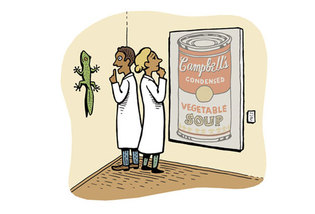 loading
loading
FindingsDust and the electric geckoA lizard showed the way to a breakthrough in microdusting.  Gregory NemecView full imageGeckos can scale just about any surface, thanks to their sticky feet—but their feet aren’t sticky in the way you’d expect. Yale postdoc Hadi Izadi discovered recently that the key adhesive in the gecko’s feet is static cling. He’s now putting that discovery to use in a high-tech cleaning tool that may help museums and the microelectronics industry get rid of a pervasive problem: dust. Izadi and his colleagues have a patent pending on a device that can remove ultra-small “particulate contamination” without causing the surface damage that often results from currently available wet or dry methods. (Izadi works in the lab of T. Kyle Vanderlick, dean of the School of Engineering and Applied Science.) The device is a soft, non-sticky polymer sheet studded with invisible-to-the-eye “micropillars”—tiny columns that, depending on the task at hand, can range in diameter from 2 to 50 micrometers (a millionth of a meter) and that become charged on contact with dust particles. “These charges are what keep a dust bunny together,” says Izadi. Each time the polymer is applied to a surface, the tips of the columns pick up new dust particles, pushing the old ones down the sides of the micropillars. The results will be published in the journal ACS Applied Materials and Interfaces. Art conservation scientists at Yale’s Institute for the Preservation of Cultural Heritage are testing the devices, particularly on modern acrylic paints, which are difficult to clean.
The comment period has expired.
|
|